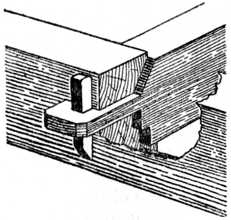I am in the hopes of trying to get some input on a really long shot question...
I was looking at alternatives for big thru tenons and found a picture in Andy Raes book "choosing and using hand tools".
Anyway there is a section on holding work that shows a wedge tenon that fits over the tenon and not thru it. It is shown on the construction of some shopmade horses.
Just curious if anyone has seen it and if you think it would be structurally sound?
I like that idea better than boring thru and weaking the piece..
I will be honest, I have been stalled on this part of my bench build because quite frankly I am unsure of myself.
I fear that I will blow the sides of my rails out if I bore thru it...
Any help would be great...
Thanks





 Reply With Quote
Reply With Quote






